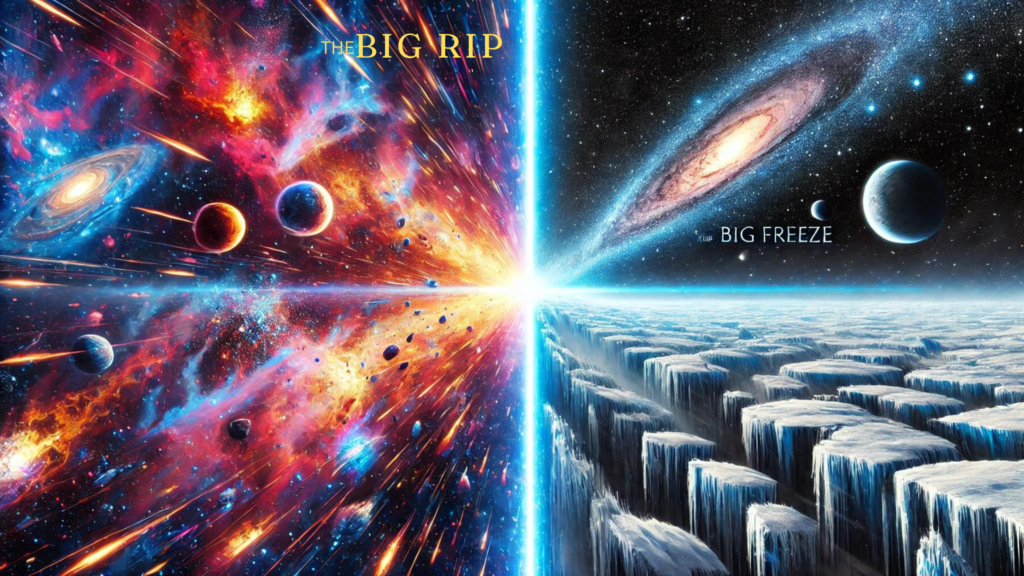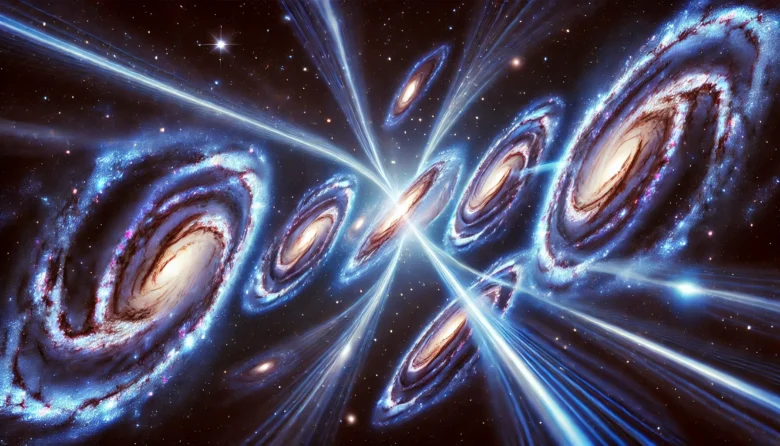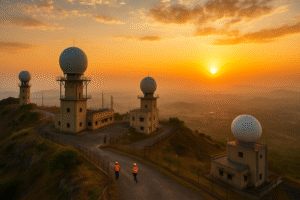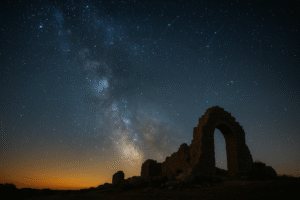Have you ever wondered why the universe is expanding at an accelerating rate? Scientists have been puzzled by this question for decades, and the answer seems to lie in something mysterious known as dark energy. Although we can’t see or touch it, dark energy is believed to make up about 68% of the universe and is the driving force behind its accelerated expansion. In this blog, we’ll explore “The Influence of Dark Energy in the Expansion of the Universe,” delving into what dark energy is, how it was discovered, and its implications for our understanding of the cosmos.
What is Dark Energy?
Dark energy is one of the most enigmatic concepts in modern physics. Unlike matter, which we can see and measure, dark energy doesn’t interact with light, making it invisible and incredibly difficult to detect. Yet, its presence is inferred from its effects on the universe’s expansion.
To grasp the concept of dark energy, we need to revisit the early 20th century when Albert Einstein developed his theory of general relativity. He included a term known as the “cosmological constant” in his equations to maintain a static universe, which was the prevailing belief at the time. However, when Edwin Hubble discovered in 1929 that the universe was expanding, Einstein considered this constant his “biggest blunder.” Ironically, it turns out that the constant wasn’t Einstein’s biggest blunder, but rather, calling it his biggest blunder was.
Fast forward to the 1990s, when astronomers discovered that the expansion of the universe wasn’t just continuing—it was accelerating. This was contrary to what was expected since gravity, the force that pulls objects together should have been slowing the expansion down. The culprit behind this acceleration was dubbed dark energy.
Discovering Dark Energy
The discovery of dark energy was a significant milestone in astrophysics, and it all started with supernovae. In the late 1990s, two independent teams of astronomers—the Supernova Cosmology Project and the High-Z Supernova Search Team—were studying distant Type Ia supernovae, which are stellar explosions that act as “standard candles.” Because these supernovae have a consistent intrinsic brightness, they are used to measure cosmic distances.
The astronomers expected to find that the expansion of the universe was slowing down, but to their surprise, they found the opposite. The supernovae were dimmer than expected, indicating that they were farther away than predicted by a decelerating universe. This led to the startling conclusion that the universe’s expansion was accelerating, driven by an unknown force—dark energy.
This groundbreaking discovery revolutionized cosmology and led to Saul Perlmutter, Brian Schmidt, and Adam Riess receiving the Nobel Prize in Physics in 2011 for their pioneering work.
The Nature of Dark Energy
What exactly is dark energy? This question remains one of the biggest mysteries in science. There are several theories about the nature of dark energy, but none have been definitively proven.
One popular idea is that dark energy is related to Einstein’s cosmological constant, representing a constant energy density filling space homogeneously. In this view, dark energy is an intrinsic property of space itself. As the universe expands, more space is created, and with it, more dark energy leads to an ever-accelerating expansion.
Another theory is that dark energy is a dynamic field, sometimes referred to as “quintessence,” that changes over time. This idea suggests that dark energy’s influence on the universe’s expansion could vary, potentially slowing down or even reversing the expansion in the distant future.
There are also more exotic ideas, such as the possibility that our understanding of gravity is incomplete and needs to be modified on cosmic scales. In this scenario, what we perceive as dark energy might be a manifestation of a more complex gravitational interaction.
The Implications of Dark Energy
The discovery of dark energy has profound implications for our understanding of the universe. For one, it has led to the concept of a “dark universe,” where dark energy and dark matter—a different mysterious substance that makes up about 27% of the universe—dominate, leaving only about 5% of the universe as ordinary matter, the stuff that makes up stars, planets, and everything we can see.
Dark energy also affects our understanding of the ultimate fate of the universe. If the expansion continues to accelerate, the universe could end in a “Big Freeze,” where galaxies move so far apart that stars burn out, and the universe becomes a cold, dark, and empty place. Alternatively, if dark energy’s properties change over time, it could lead to a “Big Rip,” where the acceleration becomes so extreme that galaxies, stars, and even atoms are torn apart.
Scientists are working tirelessly to unravel the mystery of dark energy. Missions like NASA’s upcoming Nancy Grace Roman Space Telescope are designed to investigate dark energy by studying distant supernovae and the distribution of galaxies across the universe. These efforts aim to provide more clues about the nature of dark energy and its role in the cosmos.

Case Studies and Examples
One of the most significant case studies in dark energy research is the observation of the Cosmic Microwave Background (CMB), the afterglow of the Big Bang. The CMB provides a snapshot of the early universe, and by studying its tiny fluctuations, scientists can infer the universe’s composition, including the amount of dark energy. The data from the CMB, particularly from the Wilkinson Microwave Anisotropy Probe (WMAP) and the Planck satellite, have been crucial in confirming the presence of dark energy and refining our understanding of the universe’s expansion.
Another instance is Baryon Acoustic Oscillations (BAO), which are recurring, periodic variations in the density of visible baryonic matter in the universe. These fluctuations provide a “standard ruler” for measuring cosmic distances and have been instrumental in studying the effects of dark energy on the large-scale structure of the universe.
Conclusion
Dark energy is one of the most compelling mysteries in modern science, driving the accelerated expansion of the universe and reshaping our understanding of the cosmos. While we have made significant strides in detecting and studying dark energy, its true nature remains elusive. As we continue to explore “The Influence of Dark Energy in the Expansion of the Universe,” we are not only uncovering the secrets of our universe but also opening new avenues of inquiry that challenge our fundamental understanding of physics. The journey to comprehend dark energy is ongoing, and with every new finding, we advance closer to unlocking the secrets of the universe.
Author’s Note
The study of dark energy reminds us of how much we have yet to learn about the universe. Every discovery in this field is a testament to the human spirit of curiosity and exploration.
G.C., Ecosociosphere contributor.




